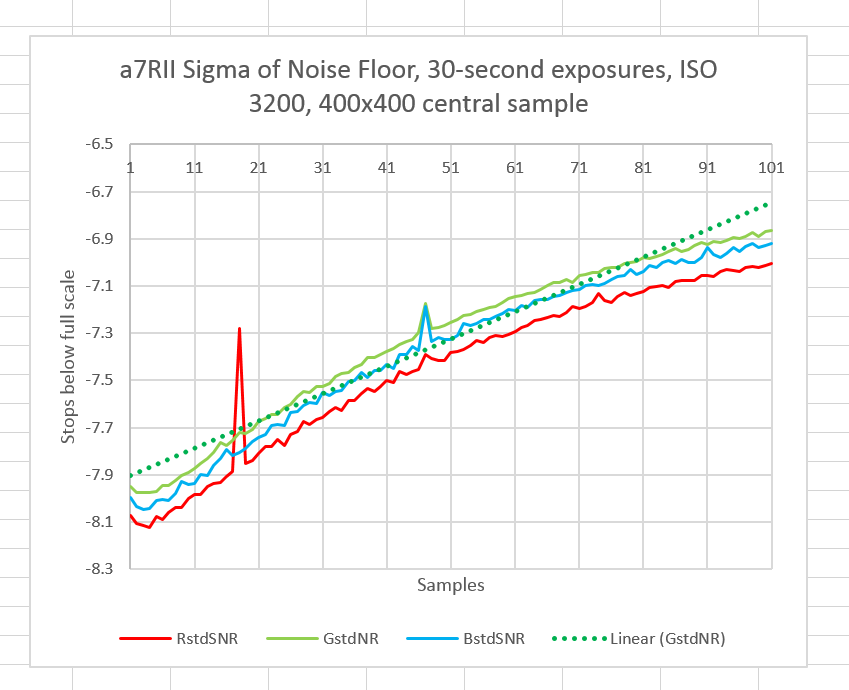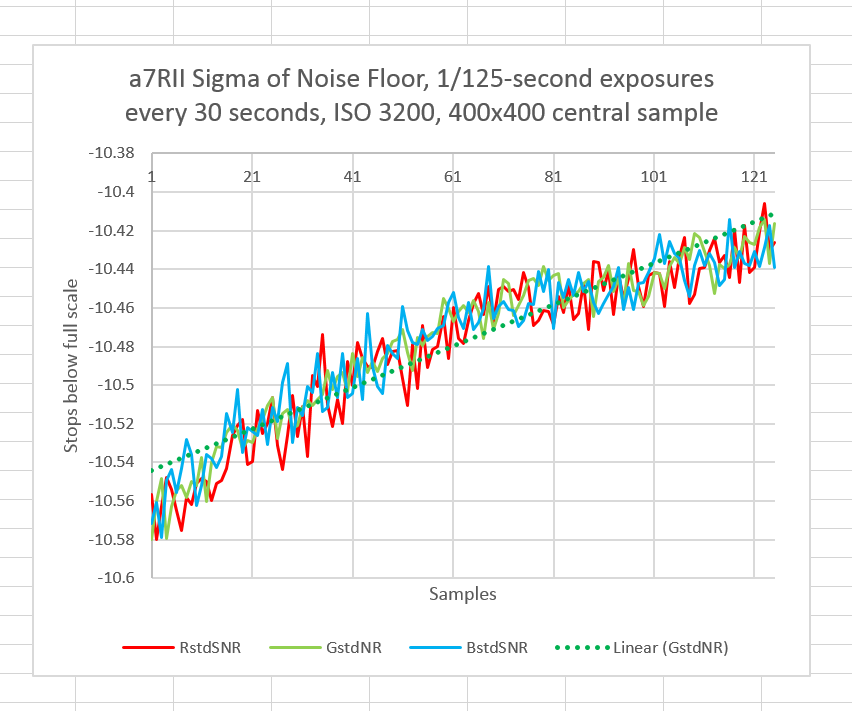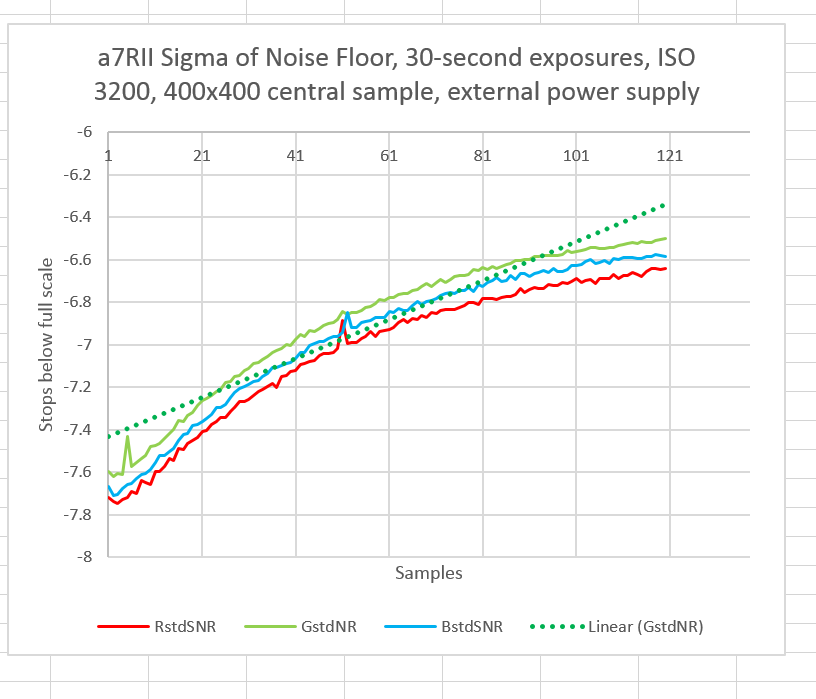There have been reports of strong self-heating effects at long exposures with the Sony alpha 7R Mark II (a7RII). I mentally discounted them, because I didn’t know of a mechanism that would preferentially heat the sensor with the shutter open and the photodiodes sitting there back-biased and waiting to snag a passing photon.
But the posting of a7RII 30 second dark frame data that was at variance with what I was seeing in my own cameras made me want to do a long exposure self-heating test.
I set the camera’s shutter speed to 30 seconds, which is as long as it will go. I set the shutter mode to EFCS, no silent shutter, single shot. I turned the IBIS off. I figured that’s the setup you’d probably use for astrophotography. I set the ISO to 3200, which is higher than I’d use myself, but seems to be some kind of astrophotography standard. I hooked the camera to an intervalometer that was set to 1 second, so that would be the greatest time interval between exposures. I turned off lens corrections. I turned off long exposure noise reduction. I stopped the lens down to f/22 and firmly affixed the lens cap. I made 101 exposures.
I measured the standard deviation of a central 400×400 pixel sample. Here’s what I saw:
There are a couple of glitches; a big one in the red channel and a little one in the blue channel. Ignoring those, we see a pronounced exponential heating effect with a time constant that looks to be about 70 shots, or 36 minutes. It looks to me like the asymptote is about 6.5 stops, which will be a stop and a half worse than where it started out. The dotted line is a linear regression fit to the green channel data.
If you look at the entire sensor, you see something similar. Here’s what you get at the beginning:
and at the end:
Is it just the live view doing the heating? I tried a sequence of 1/125 second exposures every 30 seconds.
The effect is diminished to the point where it is only of concern to testers, not people doing normal photography, and it’s not strong enough to affect most tests.
Sony a7x cameras report battery temperature in their EXIF data. That may prove useful in the future.
Thinking that the battery could be a source of much of the heat, I tried an external power supply. No joy.
It’s warmed up, so the camera started off worse than before, and got even worser (yeah, I know it’s not really a word, but it seems to fit here). I had to change the vertical axis to get the curves to fit on the graph.
This is going to complicate long exposure testing.





Will this render the A7RII out of scope for nightsky timelapses? I know that BSI Sensors are more prone to cross talk, but in return they have better efficiency. This test setup cancels out the the latter. Is there still hope that real world long exposures at moderate to high isos will be usable? Thanks for your thorough and detailed tests and best regards,
Ben
Ben, I can’t answer those questions because I’ve never done any digital astrophotography. Sorry.
Hi Jim,
thank you for your reply. I am by far not as good with numbers as you are. I just want to understand the implications of your measurements.
The way I understand it, the last picture you took has noise levels that look like they were taken with ~ISO8000.
Will this degradation of 1 1/2 stops, or to put it simple ISO3200 looks like ISO8000, be the same if you have a properly exposed image with say 5% white-clipping?
Best regards,
Ben
Ben, that’s a reasonable way of looking at it.
Thank you for your assesment and your work. I really appreciate this. So long,
Ben